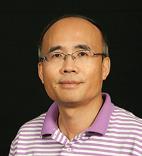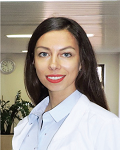Day 1 :
Keynote Forum
Huabei Jiang
University of South Florida, USA
Keynote: Watch brain activity using novel emerging imaging techniques
Time : 09:30-10:10

Biography:
Huabei Jiang was trained in biomedical optics and has made several pioneering contributions to the development of diffuse optical tomography, photoacoustic tomography and thermoacoustic tomography. He is responsible for the first applications of these imaging technologies to image epilepsy and stroke and to watch brain activity in freely-moving animals/behavior and during acupuncture.
Abstract:
The fundamental principles of several novel emerging imaging modalities including Diffuse Optical Tomography (DOT), Photoacoustic Tomography (PAT) and Thermoacoustic Tomography (TAT) for noninvasive in vivo visualization of brain tissue at both the macroscopic and microscopic scales. These imaging technologies have been developed to image seizure focus and associated networks, to detect stroke and Alzheimer’s disease, and to watch brain activity in freely-moving animals and during acupuncture.
Keynote Forum
Ekaterina Naumova
IRTC Eye Microsurgery Ekaterinburg Center, Russia
Keynote: School of vision: A new organization form of treatment process for kids with ophthalmic disorders
Time : 10:10-10:50

Biography:
Ekaterina Naumova has graduated from Ural State Medical Academy in 2006 and completed Postdoctoral studies at IRTC Eye Microsurgery Ekaterinburg Center, Ekaterinburg in 2007. She is the Chief of Pediatric Department at IRTC Eye Microsurgery Ekaterinburg Center, Ekaterinburg since 2014.
Abstract:
Background: The aim of ‘School of Vision’ is to achieve the higher results in the therapy of the eye diseases such as amblyopia induced by refractive and binocular disorders using special complex of medical cure. This complex includes medication, hardware and computer software treatment in-office performed under the doctor supervision, lectures for parents and workshops for kids, supplemented with procedures done at home in between of the visits to a doctor (home reinforcement or homework).
Objective: School of Vision’s general objectives are: To increase the level of parent’s awareness about aims and methods of treatment that their kids with eye abnormalities are going through; to use individual programs and combination of treatment methods based on the type of the eye disorder, level of amblyopia, age, gender and other criteria; and to educate parents and kids about home therapy procedures and self-control practices.
Material & Methods: The group of 35 kids aged 4 to 6 (mean age±standard deviation=4.7±1.2 years) with low degree of amblyopia due to refractive errors and binocular dysfunctions attended ‘School of Vision’ for the period of up to 9 months.
Result: A comparative analysis of vision acuity, binocular functions, motivation in treatment has been conducted. Visual acuity before treatment initiation was 0.62±0.08; visual acuity aft er treatment was 0.83 ±0.08. Improving of binocular interaction, increasing of motivation in patching and other treating procedures had been observed. Conclusion: School of Vision is a program that allows achieving high results in visual skills and abilities while treating
amblyopia in shorter time, combining special treating procedures with education for kids and parents, increasing motivation to therapy.
